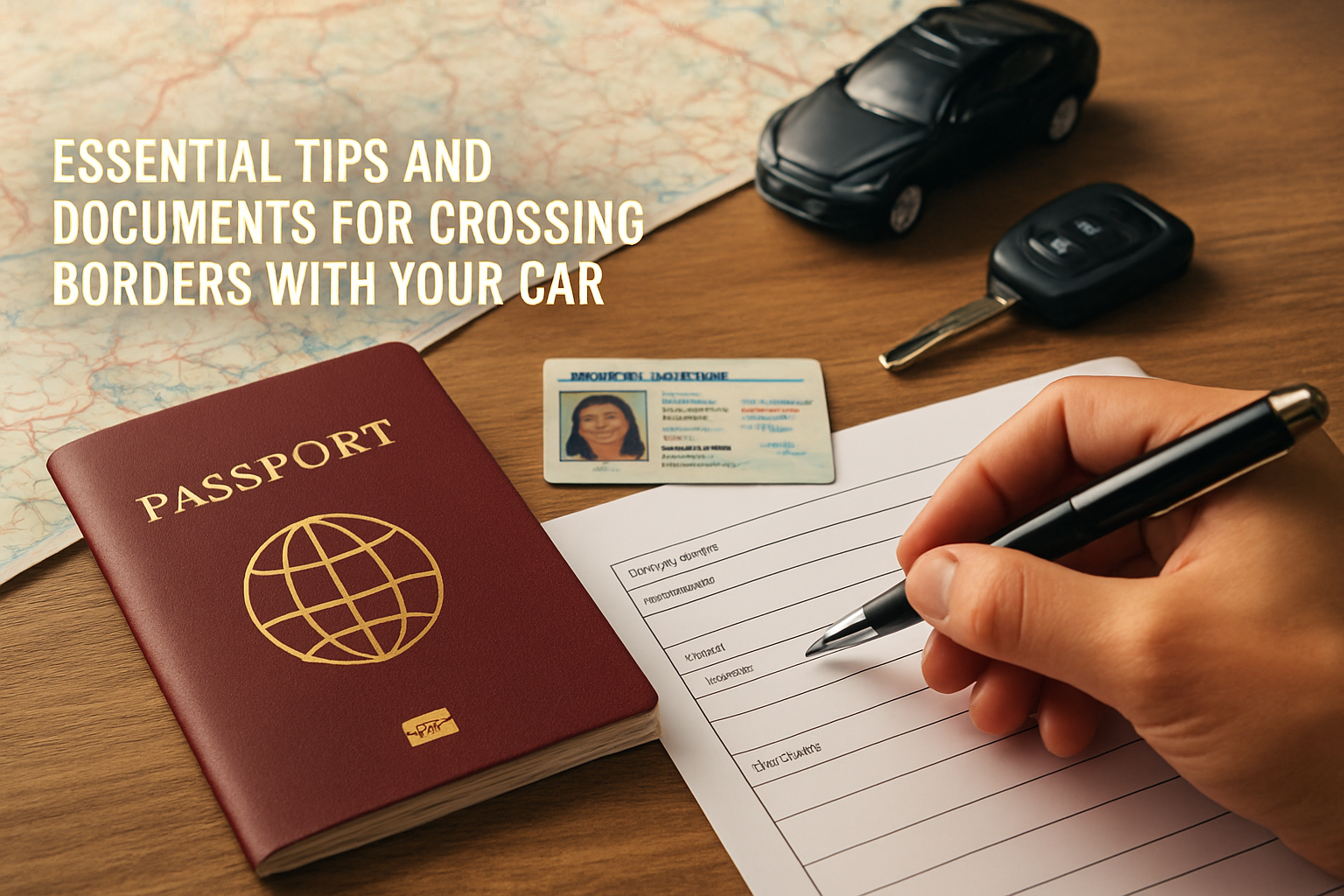Crossing Borders by Car: Documentation and Tips

Living and working abroad brings many rewards, but mobility remains a top concern for modern expats. Driving across borders adds layers of paperwork, differing rules, and the unpredictability of border procedures. You can reduce stress and avoid fines when you plan documentation, insurance, and vehicle readiness before you leave. This post breaks down practical steps so you travel with confidence.
Prepare Your Documents
Start with a documents checklist that covers both people and vehicle requirements. Carry originals and digital copies so officials can verify details quickly. Keep the most important items in a secure but accessible place while you drive.
- Passport and valid visa or residency permit
- Driver’s license plus an International Driving Permit (IDP) if required
- Vehicle registration certificate (V5 or equivalent)
- Proof of ownership or a notarized letter if you drive a company or borrowed car
- Current roadworthiness or inspection certificate where applicable
Example: If you hold a Turkish residency card and drive into a neighboring EU country for a short trip, present your passport, residency card, Turkish registration, and an IDP when an officer requests them. Doing this avoids delays and shows you respect local rules.
Insurance and Cross-Border Coverage
Verify that your auto insurance covers cross-border travel. Many insurers offer a “Green Card” or temporary international cover that proves third-party liability abroad. Buy coverage before you hit the border to prevent last-minute issues.
- Confirm dates and territories covered by your policy
- Purchase temporary third-party insurance if your policy excludes the destination
- Add roadside assistance that operates in the countries on your route
- Keep digital images of your insurance documents for quick access
Example: A family driving from Istanbul to Greece avoided a penalty after presenting a printed Green Card and a screenshot of their insurer’s confirmation on a tablet. The border agent accepted the proof and they continued without buying cover at the crossing.
Temporary Importation and Customs Rules
Learn customs procedures for temporary vehicle importation. Some countries require a Carnet de Passage or a temporary import permit, while others allow short stays without formalities. Check limits on fuel, food, and personal items to prevent confiscation or fines.
When you enter with a vehicle, officers may ask for a temporary import stamp. Register the stamp and keep the receipt until you exit. This record prevents import tax claims later.
Example: An expat living in Ankara drove his car to Bulgaria for a wedding. He registered the vehicle’s temporary import at the Turkish exit and kept the receipt in the glovebox. Border staff released the car quickly when he re-entered Turkey because he presented the original receipt.
Practical Border Crossing Tips
Choose border points with good reviews and lower traffic during peak migration or holiday dates. Check opening hours and queue times online. Prepare cash in the local currency for small fees and ensure your phone plan supports roaming or buy a local SIM near the crossing.
- Arrive early to avoid long queues
- Have a printed and digital set of documents
- Keep children’s and pets’ papers ready if they travel with you
- Learn basic local phrases or use a translation app for quick communication
Example: To avoid a long wait during summer, a couple took a less popular border crossing two hours earlier than planned. They cleared checks in 20 minutes and reached their destination before the afternoon traffic surge, saving time and stress.
Vehicle Readiness and Local Road Rules
Prepare your car for the road conditions and regulations of each country you cross. Fit safety equipment that local law enforcement often requests, such as a reflective vest, warning triangle, and a first-aid kit. Adjust headlights when you move between left- and right-hand driving territories.
Also check fuel availability, toll systems, and required vignettes or electronic tags. Register for e-toll services if you plan extensive travel in a country that uses electronic tolling systems to avoid fines.
- Carry a basic tool kit and spare tire in good condition
- Service brakes, lights, and tires before long trips
- Pack spare bulbs and fluids that match your vehicle
- Download local traffic and navigation apps for offline use
Example: A driver crossing into Montenegro downloaded the local toll app and prepaid the vignette at a service desk. Border officials accepted the proof on his phone and he avoided the roadside fines others received for unpaid tolls.
Crossing borders by car can feel complex, but planning removes most surprises. Focus on core documents, confirm insurance, follow customs rules, and ready your vehicle. These steps speed up checks and increase your confidence on the road. If your route includes multiple countries, invest time in country-specific research before you leave. That preparation delivers smoother crossings and more time to enjoy the journey.
